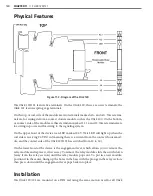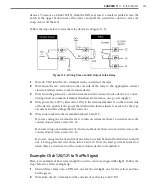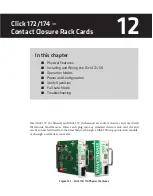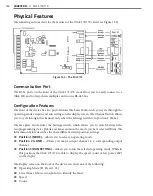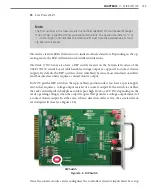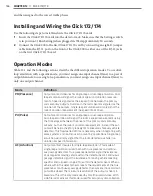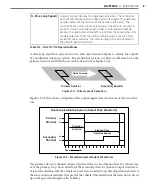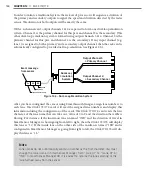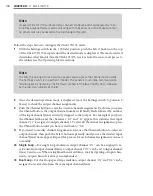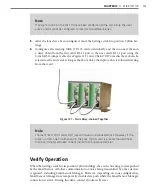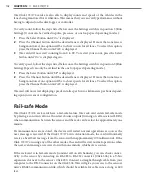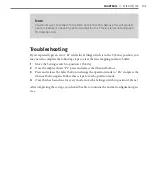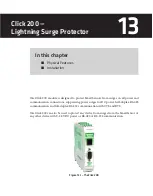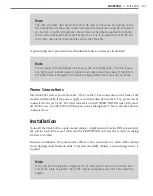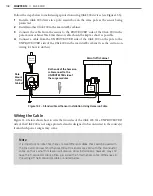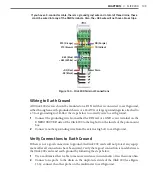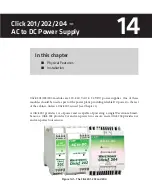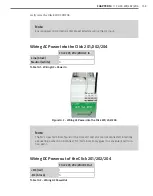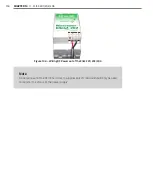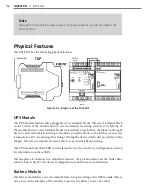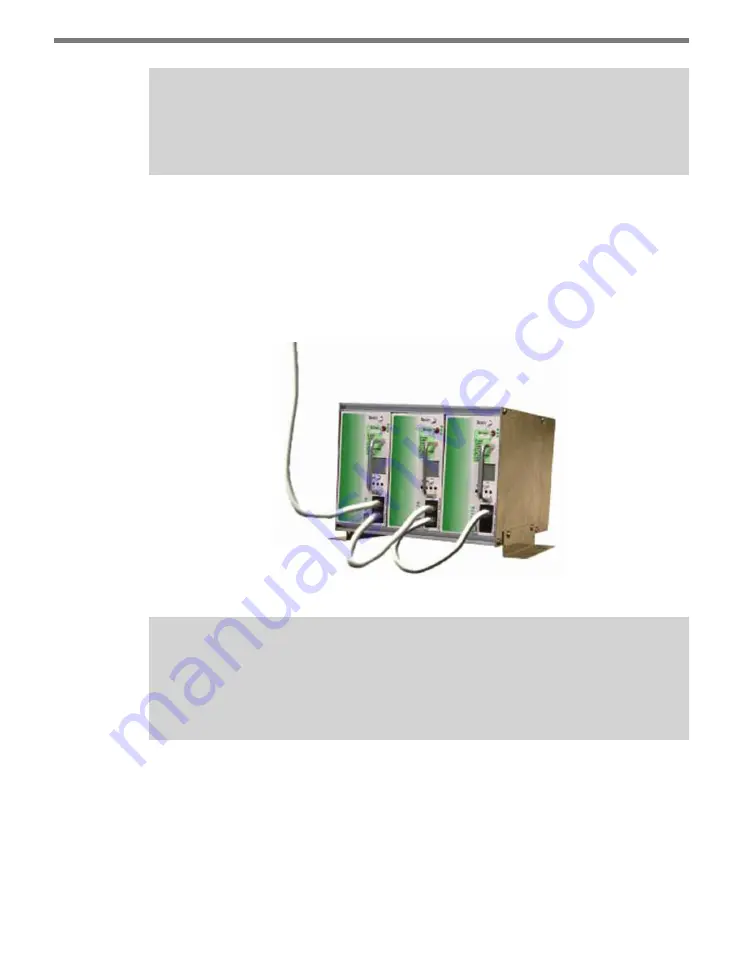
CHAPTER 12
• CLICK 172/174
141
Note
If outputs 1 and 2 on the Click 174 have been configured to the same lane, then out-
puts 3 and 4 cannot be configured to monitor two different lanes.
5
After the lanes have been configured, move the Settings switch to position 3 (Run Set-
ting).
6
Configure all remaining Click 172/174 cards individually and then connect them in
a daisy chain from the first card’s RJ-11 port to the next card’s RJ-11 port using the
4-inch RJ-11 jumper cables (see Figure 12.7). Any Click 172/174 card in the rack can be
selected as the first card, as long as the above daisy chain procedure is followed starting
from that card.
Figure 12.7 – Cards Daisy-chained Together
Note
The last Click 172/174 card’s RJ-11 jack will have an unconnected jack. However, if the
cable run from the SmartSensor to the Click 172/174 card is greater than 500 feet,
then a terminator will need to be attached to the unconnected slot.
Verify Operation
When the Settings switch is in position 3 (Run Setting), the card is listening to data pushed
by the SmartSensor. All other communication or noise being transmitted by other devices
is ignored, including SmartSensor Manager. However, depending on your configuration,
SmartSensor Manager may temporarily disable data push while the SmartSensor Manager
connection is active. During this time, contact closures will cease.
Summary of Contents for Click 100
Page 1: ...Click 100 400 Series USER GUIDE...
Page 11: ......
Page 17: ......
Page 27: ......
Page 41: ......
Page 43: ......
Page 79: ......
Page 129: ......
Page 145: ......
Page 161: ......
Page 175: ......
Page 183: ......
Page 187: ......
Page 207: ......
Page 219: ......
Page 225: ......
Page 245: ......
Page 259: ......
Page 260: ...www wavetronix com...




